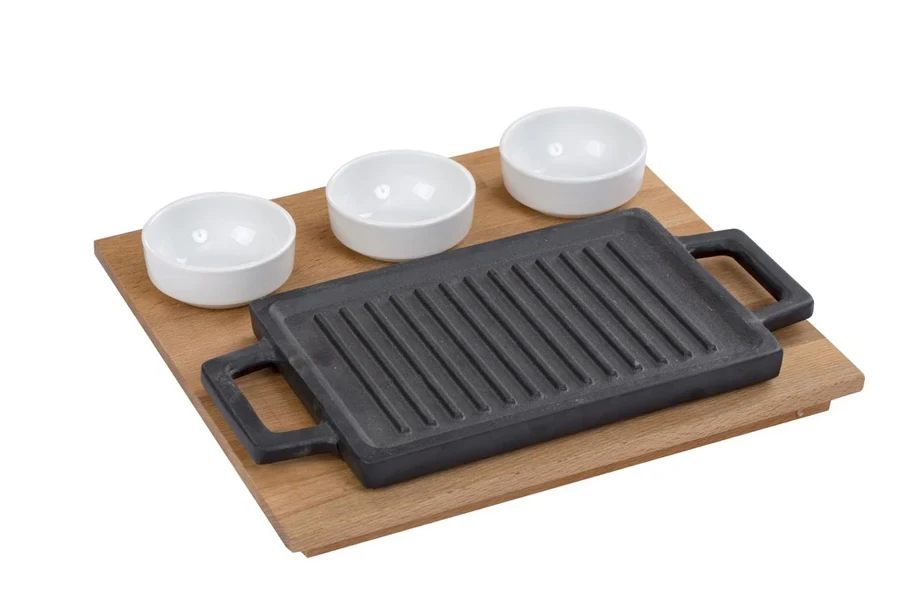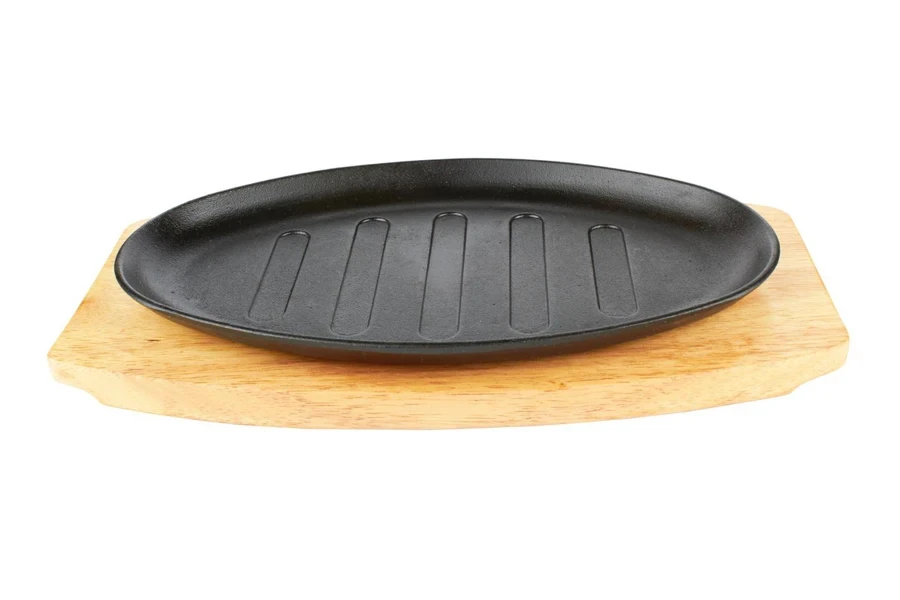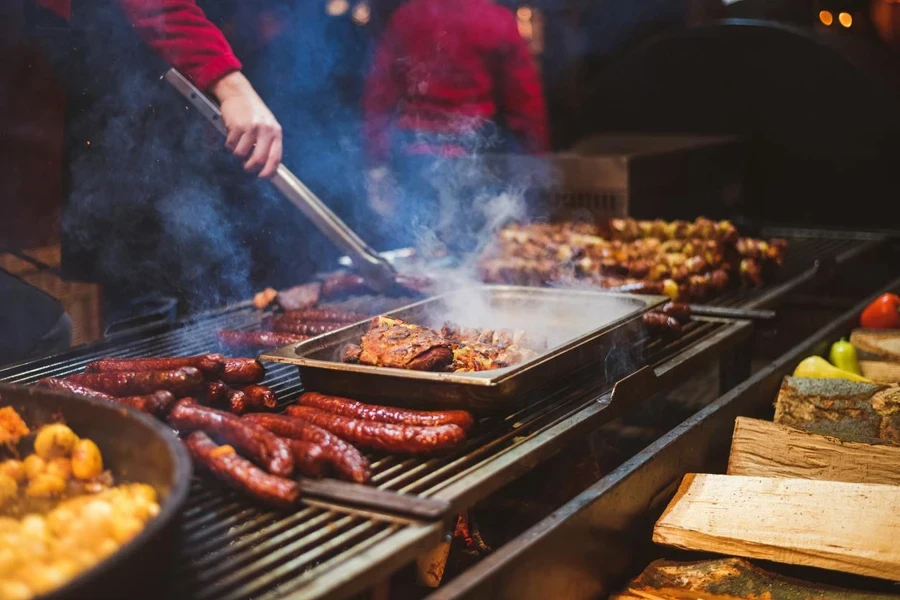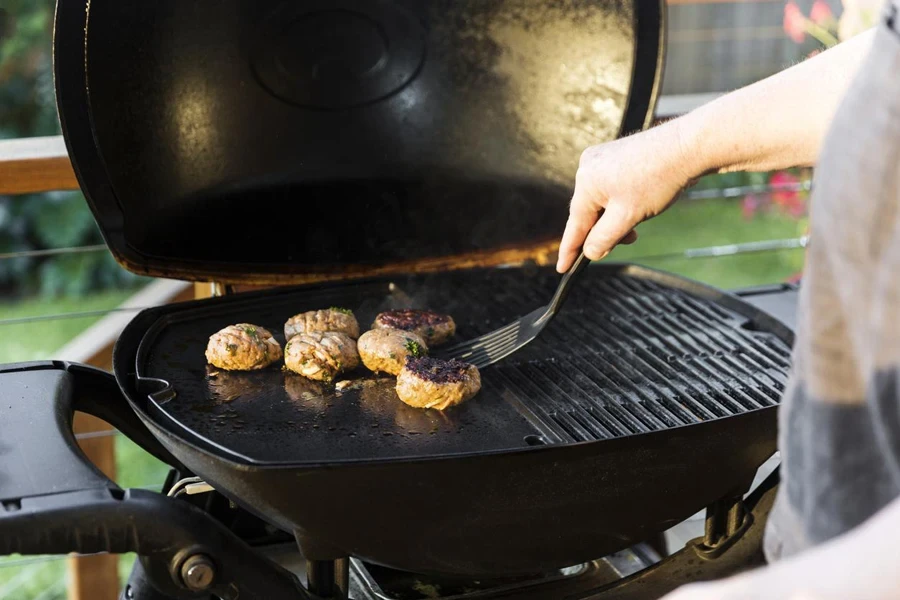Table of Contents
1. Introduction
2. Exploring the main types of griddles and their applications
3. The griddle market in 2025: Trends and insights
4. Key factors to consider when selecting griddles
5. Best griddle models and their standout features
6. Conclusion
Introduction
Griddles are essential in both commercial kitchens and high-demand culinary environments due to their versatility and efficiency. These flat cooking surfaces allow for precise temperature control and even heat distribution, making them perfect for cooking a wide variety of foods—such as pancakes, meats, and vegetables—on a large scale. From traditional cast iron to modern electric and ceramic models, griddles offer an ideal solution for efficient batch cooking, reducing preparation time while maintaining food quality. Their wide surfaces and durable build help meet the demands of professional kitchens with ease.
Exploring the main types of griddles and their applications

Griddles are a fundamental tool in many commercial kitchens, offering versatility, efficiency, and the ability to prepare a range of foods. Different types of griddles cater to specific needs, with unique advantages depending on the material and design. Below are the key types of griddles and their applications.
Cast iron griddles: Durability and high heat retention
Cast iron griddles have been favored for their durability and exceptional heat retention. These griddles are capable of maintaining a consistent temperature across the cooking surface, making them ideal for preparing foods that require even heating, such as pancakes, flatbreads, and various meats. Cast iron also has a reputation for enhancing the flavor of food, as it naturally seasons over time with regular use. However, cast iron is heavier than other materials and requires proper care to prevent rusting and maintain its non-stick properties. Cleaning these griddles involves avoiding dishwashers and using gentle handwashing methods to ensure longevity.
Electric griddles: Ease of use and temperature control
Electric griddles are a popular choice for indoor cooking due to their portability and ease of use. These griddles typically feature non-stick surfaces, which simplify cooking and reduce the need for excess oil, contributing to healthier meal preparation. Electric models come with adjustable temperature settings, allowing for precise control over cooking heat, which is beneficial for delicate foods like eggs and pancakes. Additionally, many electric griddles come equipped with grease traps to capture excess oil, making cleanup much more manageable. Their uniform heat distribution ensures consistent results without hot spots, making them suitable for larger-scale cooking environments where efficiency is crucial.
Ceramic griddles: Non-stick surfaces for healthier cooking
Ceramic griddles offer a modern solution for those seeking a non-stick cooking surface without the use of chemical coatings. These griddles are highly valued for their easy-to-clean surface, making them a low-maintenance option. Since ceramic retains heat well and evenly, it’s ideal for cooking foods that require steady temperatures, such as fish, vegetables, and grilled sandwiches. Furthermore, ceramic griddles often have non-toxic coatings, allowing for healthier cooking by minimizing the need for oils and fats. However, users must avoid using metal utensils to prevent scratching the surface, and regular care is required to maintain the griddle’s longevity.
Dual-surface griddles: Versatility for both stovetop and electric cooking

Dual-surface griddles offer unmatched versatility by featuring both smooth and ridged surfaces, allowing for a range of cooking methods on a single device. These griddles can be used on stovetops or electric sources, providing flexibility for different cooking environments. The smooth side is perfect for frying and cooking foods like eggs and pancakes, while the ridged side is excellent for grilling meats and creating grill marks on steaks or vegetables. This adaptability makes dual-surface griddles a popular choice for those who need a multifunctional tool in busy kitchens.
The Griddle Market in 2024: Trends and Insights
Market growth and demand: Rising popularity of home cooking and outdoor grilling
The global griddle market is projected to experience steady growth, with an anticipated value of $834.2 million by 2033 and a compound annual growth rate (CAGR) of 4.7%. This growth is largely driven by increasing consumer interest in versatile cooking solutions, both for home cooking and outdoor grilling, as well as a rising demand for efficient, large-capacity cooking equipment in the foodservice industry. Full-service restaurants, in particular, represent a substantial portion of this market due to their need for durable, high-volume griddles, according to Future Market Insights.
Restaurants and food establishments also contribute to this growth, as griddles are ideal for preparing large quantities of food quickly, improving kitchen efficiency. This is particularly important in high-volume environments, such as full-service restaurants, which make up a significant portion of the market. Additionally, the popularity of outdoor cooking, especially in North America and the Asia-Pacific, has further boosted griddle demand, making them essential tools for both commercial and home use.
Innovative features: Non-stick coatings, larger cooking areas, and heat distribution improvements
As the demand for griddles grows, manufacturers are focusing on adding practical features to enhance both home and commercial cooking. A key improvement is the adoption of non-stick coatings, which make cleaning easier and reduce the need for oils or butter, promoting healthier cooking. Ceramic coatings, in particular, are popular due to their environmentally friendly properties and lack of harmful chemicals, appealing to consumers looking for safer options.
In commercial settings, larger cooking surfaces are increasingly favored, allowing chefs to prepare multiple dishes at once, improving kitchen efficiency. Dual-zone temperature controls, which enable cooking different foods at varying temperatures on the same surface, are another valuable addition. Furthermore, innovations in heat distribution have led to the use of materials like carbon steel and cast iron, which offer better heat retention and even cooking, ensuring more consistent results and reducing the risk of unevenly cooked meals.

Key factors to consider when selecting griddles
Material composition: Pros and cons of cast iron, ceramic, and aluminum
The material of a griddle greatly influences its performance. Cast iron is known for its excellent heat retention and durability, making it ideal for heavy-duty cooking, but it requires regular seasoning to maintain its non-stick properties and prevent rusting. It is also quite heavy, which may not be suitable for all environments. Ceramic griddles, with their non-stick surfaces, are easier to maintain and healthier as they require less oil. However, they are more delicate and prone to chipping. Aluminum griddles heat up quickly and are lightweight, but they don’t retain heat as well as cast iron and may need an additional non-stick coating for easy use.
Heat distribution and retention: Importance of even heating for consistent cooking
Even heat distribution is critical for consistent cooking. Cast iron and carbon steel are well-regarded for their ability to evenly spread and retain heat, ensuring food cooks uniformly. This is especially important in high-volume kitchens where efficiency and consistency are key. Electric griddles often come with temperature controls to assist with even heating, though some models may still develop hot spots. Ensuring good heat distribution can save time, reduce energy usage, and improve cooking quality.
Ease of cleaning and maintenance: Non-stick vs traditional surfaces
Griddles with non-stick surfaces, such as those made from ceramic or aluminum, are popular for their ease of cleaning, as food rarely sticks, making maintenance quick and simple. However, non-stick coatings can wear out over time and require careful handling to avoid scratches. Cast iron griddles need more maintenance, requiring regular seasoning, but they can last for years with proper care. The choice between non-stick and traditional surfaces depends on the balance between convenience and longevity in the kitchen.
Size and surface area: Choosing based on the scale of cooking operations
The size of the griddle is a key consideration, particularly in larger kitchens where high-volume cooking is required. Bigger griddles allow for cooking multiple dishes at once, improving efficiency and reducing prep time. For smaller kitchens or those with varying cooking needs, dual-zone temperature control griddles offer flexibility, allowing different foods to be cooked at different temperatures on the same surface. Choosing the right size griddle depends on the scale and needs of the kitchen’s daily operations.

Best griddle models and their standout features
Staub Enameled Cast Iron Griddle: Durability and multipurpose use
Staub is renowned for its high-quality enameled cast iron cookware, and its griddles are no exception. The Staub Enameled Cast Iron Griddle stands out for its superior durability and heat retention. Made from heavy-duty cast iron, this griddle is designed to maintain even heat across the surface, which is essential for consistent cooking. The enamel coating not only enhances the durability of the griddle but also adds a non-stick element, reducing the need for excessive oils. Its versatility allows it to be used on various heat sources like stovetops, ovens, and even outdoor grills, making it a great fit for both home and professional kitchens that need a robust, multipurpose griddle.
Presto Ceramic 22-Inch Electric Griddle: Efficiency and size for large batches
Presto is a trusted brand when it comes to electric kitchen appliances, and its 22-Inch Ceramic Electric Griddle is ideal for large-scale cooking. This model is known for its expansive cooking surface, allowing chefs to prepare multiple items at once, which is perfect for commercial kitchens or busy home cooks. The ceramic coating is another key feature, providing a non-stick surface that ensures even cooking and easy cleaning. The griddle also includes built-in temperature controls that help maintain precise heat levels, making it efficient for everything from breakfast foods to grilled sandwiches. Presto’s focus on simplicity and reliability makes it a go-to brand for large-scale, efficient cooking solutions.
Cuisinart Electric Griddle: Ideal for home use with superior temperature control
Cuisinart, a leader in kitchen appliances, offers a range of griddles that excel in temperature control and ease of use, particularly their electric models. Known for compact yet powerful designs, Cuisinart griddles are perfect for home use where space may be limited, but performance is still crucial. The electric griddles from Cuisinart are equipped with advanced temperature controls, which allow for precision cooking of delicate items like eggs or pancakes. Additionally, many models feature removable non-stick plates, making them easy to clean and maintain. Cuisinart’s attention to user-friendly features, combined with reliable performance, makes their electric griddles a top choice for both casual and more demanding home chefs.

Conclusion
Selecting the right griddle in 2025 requires careful consideration of material, heat distribution, ease of maintenance, and size. Cast iron offers durability and excellent heat retention, while ceramic and aluminum prioritize non-stick surfaces and easy handling. For high-volume kitchens, large griddles with efficient heat control are essential, while dual-zone temperature controls provide flexibility for smaller operations. Brands like Staub, Presto, and Cuisinart each offer unique strengths tailored to different needs, from heavy-duty commercial use to compact home kitchens. Balancing these features ensures buyers can invest in griddles that meet both quality and operational demands.



